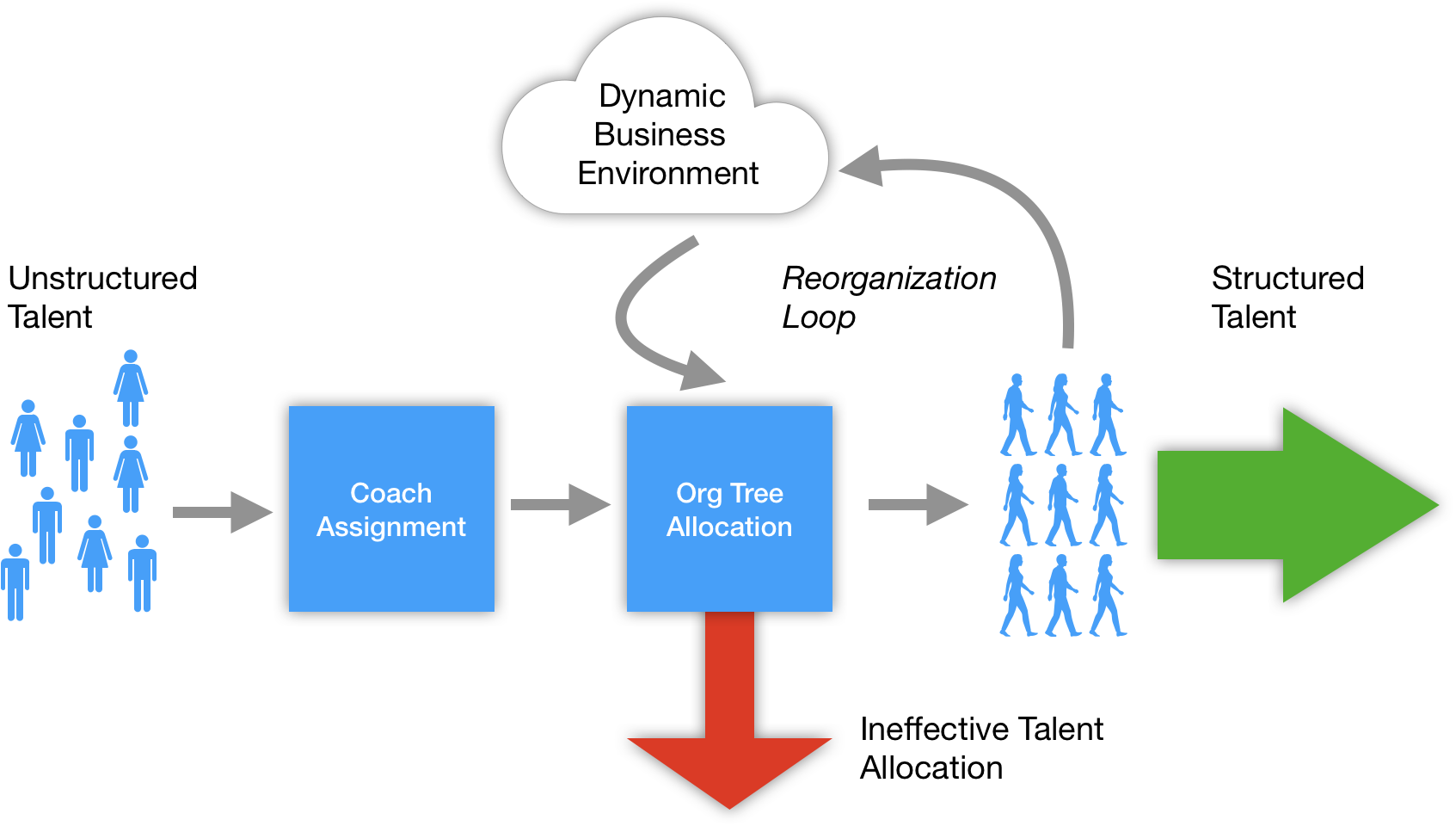
As a hiring system hums — bringing in unstructured talent — we’ll need a system to structure everyone.
The goals for this structuring system are:
- Promote mastery of skills and craftspersonship
- Support both long-term & short-term thinking arcs
- Consistent coaching across organizational changes
- Quick adaptation to changing business environments
The Structuring System model includes:
- Inputs:
- Hired unstructured talent (employees, contractors)
- Outputs:
- Talent structured using various organizational design patterns. These organizational design patterns will be discussed in detail.
- There will be some wasted talent due to sub-optimal allocation. No system is perfect — some heat will be emitted, but we should strive to minimize this.
- Feedback loops:
- Reorganization Loop — Structured talent will be undergoing major and minor continuous reorganizations stimulated from a changing business environment.

It’s important to note that this system first assigns a dedicated coach to an engineer before they are allocated in the organizational tree. This organizational design pattern — dedicated coaches — is described later in detail.
Organizational Engineering Tree
The parts (humans) in an organizational tree are structured in such a way to seed for the highest potential group flow downstream in the Executing System and self-actualization in the Leveling up System
We’ll define the parts and their roles so that we have shared definitions.
Organizational Parts
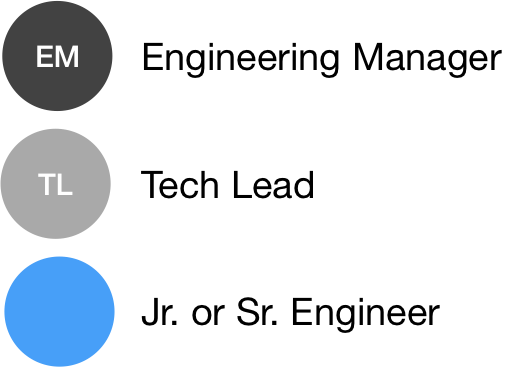
In basketball nomenclature, we can define these roles as:
- EM — Coach — is a coach on the sideline deciding what players are on the court and drawing up plays.
- TL — Point Guard — is the ace player on the court (and in the code). They’re great at leveling up other engineers around them and dishing out specific coding tasks. They are the game-time technical decision maker and can draw up architectural solutions to solve complex problems.
- Jr. or Sr. Engineers — Role Players — Supporting players that play an essential role on the team. They are under co-leadership from an EM and TL.
Organizational Scale
This organizational tree will vary depending on your team’s scale.
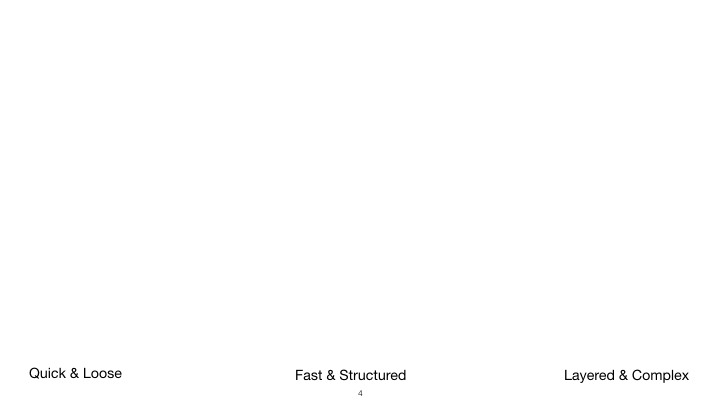
When your team is super small, an organizational structure can be more of a hindrance than a help. However, as the team grows, you’ll need some organizational design patterns for structuring chaos into balance with order.
Organizational Patterns for Structuring

Let’s unpack each of these organizational design patterns.
Static Guilds

The static guild pattern is used to create long-lived membership bonds in an area that requires specialization to truly master.
For example, static guilds could be created for specific platforms (iOS, Android, Web, Backend, etc.) or disciplines (data science, security, growth, etc.).
A guild member’s duty is to always do what’s best for their platform or discipline.
The expertise and knowledge required within a guild area is ever growing as fields and platforms rapidly evolve. New APIs, algos, and techniques are available every year.
Guild members share knowledge and best practices through regular internal meetups, chatrooms, and wikis.
Dynamic Circles

The dynamic circles pattern is used to form cross disciplinary teams “instantaneously” to tackle specific initiatives or feature sets.
A circle is formed with a TL at the center. Supporting role player engineers are added to fill out the circle over time. The role player engineers are colored to denote varied skills to round out the circle.
These circles can have varying lifespans depending on the scope of the initiative. A circle could spin up only for a short duration for prototyping and others can last over a year on a large initiative (think Facebook’s Libra).
A circle scales vertically depending on its lifecycle stage. For example:

- A new initiative may only need a single TL to get started in the prototyping phase
- To iterate faster and scale, more engineers are added to the circle as the requirements become more clear
- As an initiative ramps down into maintenance mode, the work can be consumed by guilds and the circle can dissipate.
- Alternatively, the circle can continue on and become a long-lived team
Dedicated Coaches
In the dedicated coaches pattern, an engineer is paired with an engineering manager (EM) as their coach for the length of their career at the company.

A dedicated coach EM mentors many engineers through the trials and tribulations they’ll inevitably face across projects (working in various guilds and circles).
One particular challenge many engineers face is imposter syndrome. There are number of tactics for a coach to be trained with to help resolve issues from imposter syndrome to poor performance.
The dedicated coach is a person whom an engineer can develop trust & rapport with across many organizational structure changes.
EMs with Emotional Intelligence (EQ)
EMs in this role must optimize for EQ. It is even more important than IQ in this role as a coach. Engineering Management is about people engineering using systems thinking in the human domain.
An EM with a high EQ can bring a heart centered approach to a highly rational field. This infuses some soul into an otherwise precise and competitive arena.
This requires training EMs (who are usually former engineers) in the ways of EQ. An EM’s prior engineering training doesn’t usually include exposure of sufficient depth to other knowledge domains required for skillful people engineering.
A good path for layering EQ on top of IQ is to read Emotional Equations from Chip Conley. The book uses mathematical operations to explore the realm of emotions (e.g. Despair = Suffering - Meaning)
Firing
I have to admit that this dedicated coaches pattern is more experimental as I’ve haven’t the opportunity to fully explore.
There are some nuances to consider. For instance, how do dedicated coaches properly navigate dual interests between coaching an engineer thru poor performance and the company’s need to fire consistent poor performers?
Some of these same nuances arise in self-organization systems like Halocracy. I spent a month last year studying Halocracy in-depth as I’m fascinated by the concept of self-organization. I’m not advocating for Halocracy in this dream team, rather I’m applying our system design principle of hybridization to leverage both top-down command and bottom-up self-organization approaches.
In this example, dedicated coaches are also responsible for firing engineers who do not make the necessary improvements despite a coach’s best-efforts.
Promotions and Compenstation
An engineer’s dedicated coach is responsible for guiding them through career promotion process and negotiates a compensation package with them.
A dream team promotion process doesn’t involve lengthly and painful promotion packets. This alternative promotion process is discussed in a System for Leveling Up.
External Coaching
The best coach within the context of a company can only do so much as many of us have traumas that go back to childhood and require outside help.
I’ve personally found Native American (and other Indigenous peoples) healing ceremonies to be of particular help. Sadly, as I’m editing this paragraph in August 2019, the Amazon rain forest is intentionally being burned to clear the land for livestock and agricultural. Clearly our economic systems are sick and need to be redesigned to capture the true value of the world’s largest rain forest.
I give my highest recommendation for enlisting the services of One Mountain Leadership founded by Ty Hammond. I’ve been working with Ty Hammond for several years now on my own personal leadership development.
Ty Hammond’s approach to coaching is one that you won’t find anywhere else. The approach — without giving way too many details — unpacks a Matter at Hand through personal introspection to self-realize counter tactics and forgotten vows that allows one to uncover a deep story underlying unconscious behaviors and attitudes.
Working with Ty — as my leadership coach — has helped me to breakthrough the resistance holding me back from finally writing up this series that you’re reading now.
I’m partnering with Ty and One Mountain Leadership to put together curated training workshops to develop your Leadership Dream Team.
Reach out to discuss further details.
Architecture Groups
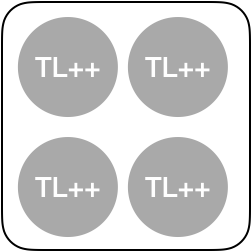
The architecture group pattern is used to create an arc of longer-term thinking across guilds and circles.
An architecture group consists of the top leads (TL++) from the other organizational structuring patterns. These members are tasked with forecasting future infrastructure and architecture needs across engineering.
The engineering infrastructure in production today will be in perpetual fight against entropy as new requirements surface and additional scale is needed. An architecture group is the counter force to entropy. They bring-forth new life — with DNA upgrades — to thrive in a changing environment.
Office Seasteading
The limited physical structure of an office building shouldn’t add additional constraints on to how your team structures itself.
A group known as the Seasteading Institute seeks to move past the limitations of Earth’s available land for continued political and economic system experimentation by creating modular floating island cities.
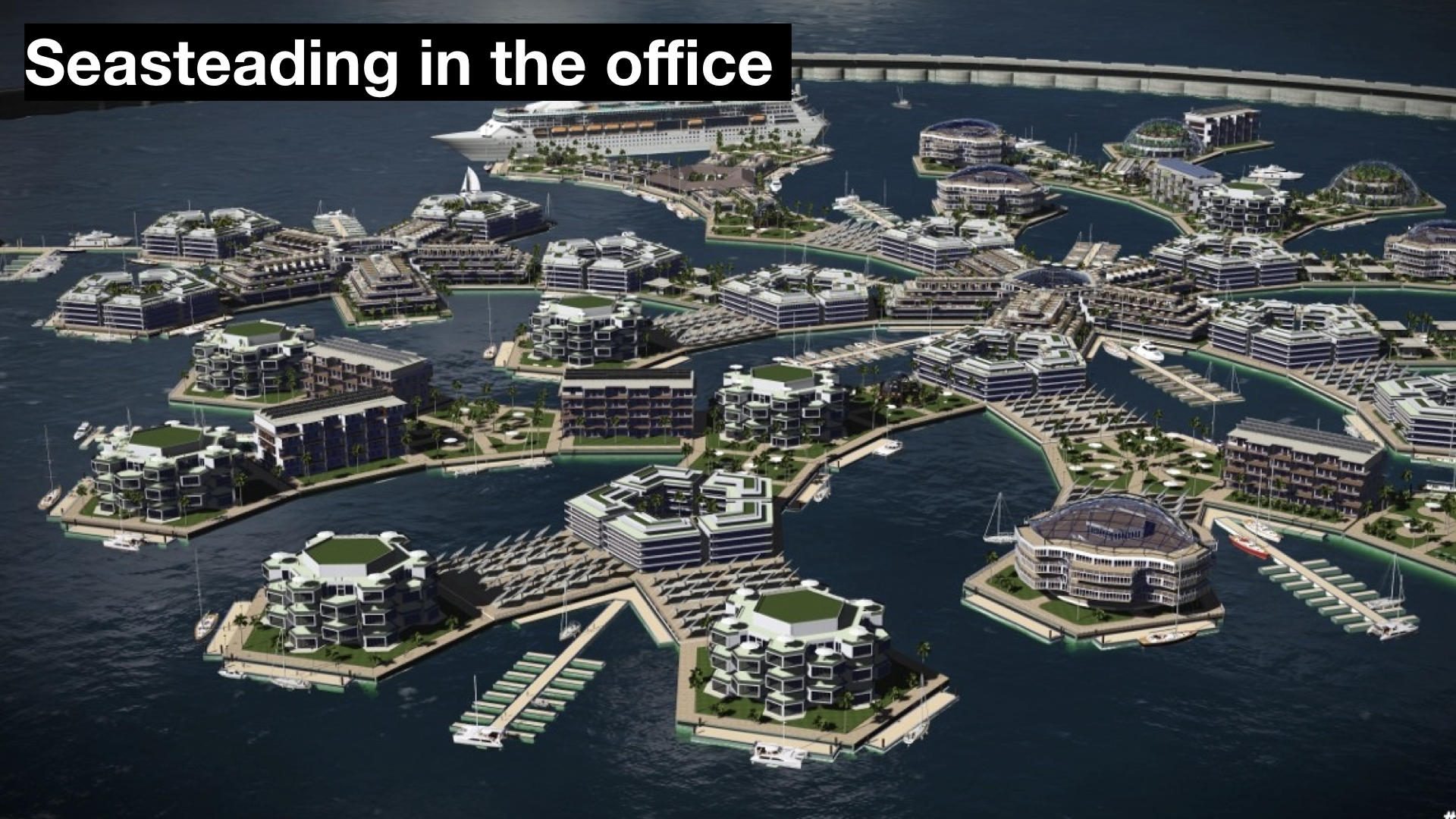
This concept of Seasteading can be applied to an office context by imagining the office floor as a vast sea and desks as modular components free to roam and form team cities (eg dynamic circles).
Take Valve Software’s Employee Handbook as an example. It includes a page entitled “How to operate your desk”.

Pretty simple, eh? Every desk has wheels. Just unplug, go, and plug into your new dynamic circle. A central service tracks your desk location so others can find you post re-location.
Anti-patterns
- Deep Org Layering - As the eng organization grows, it’s easy to end up with a deep org tree which many layers of management. The dedicated coaches pattern help keeps the org tree flatter since an single skilled EM+EQ can work with many TLs and role playing engineers (max ~20-25).
- Solo Leadership - A engineer should have the opportunity to work with a variety of leadership styles. A engineer should look to both a EM (i.e. head coach) and TL (i.e. team captain) for co-leadership.
- Inflexible Org - The org tree should adapt to business objectives. Physical space shouldn’t prevent reorgs from happening. EM politics should not yield a suboptimal org structure.
Key Takeaways
- Leverage organizational design patterns to reassemble the org structure at different scales.
- Use the concept of office seasteading to keep the physical office from constraining the org structure.
- Use external coaching to train EMs with EQ skill so that they can be high performing dedicated coaches.
NEXT> We’ll explore a System for Executing
GOTO: Table of Contents
© 2019 Adam Huda - Written in California & Montana with iA Writer